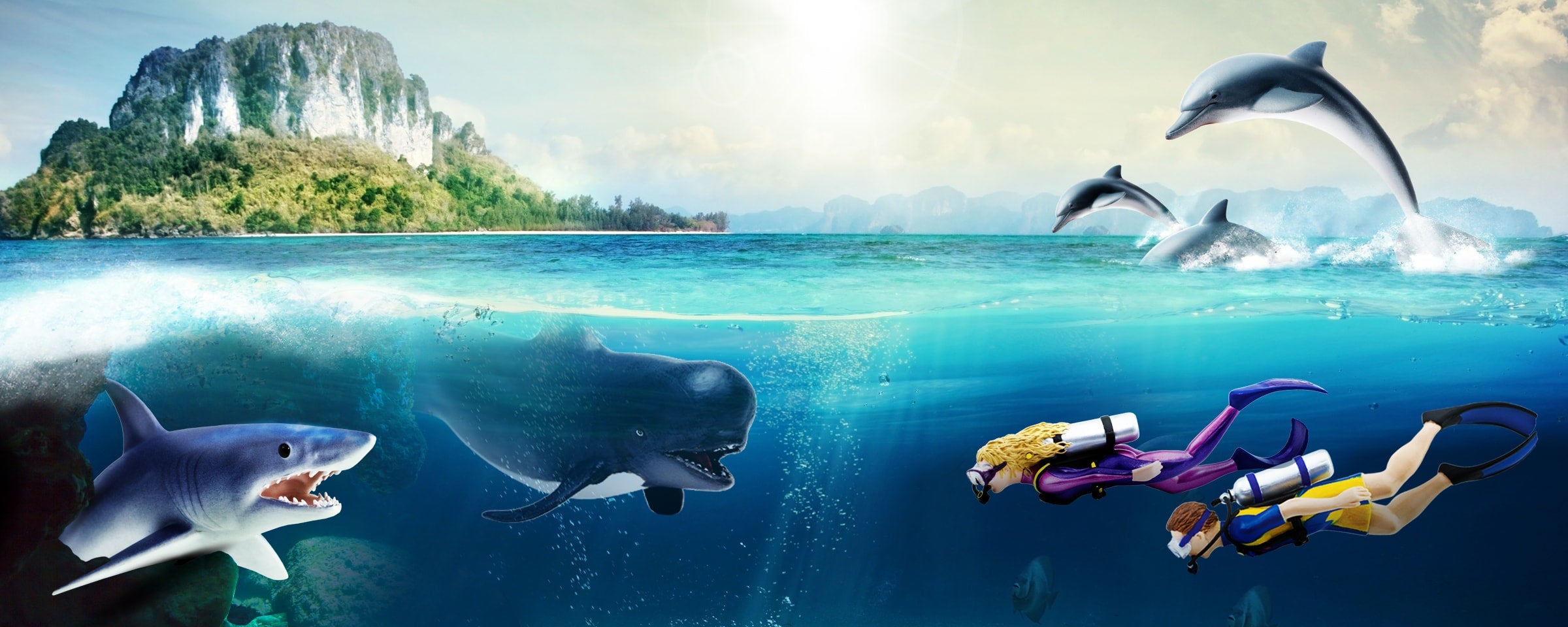Single Use Plastic Bags vs. Reusable Tote Bags
As we previously touched on with our Plastic Straws blog post, there’s a lot of attention being paid these days to single use plastic items like straws, many kinds of product packaging, and plastic bags. These items are considered wasteful because they are meant to be used once and discarded, and are often difficult to recycle, which means a lot of them end up in landfills, or – even worse – you end up with plastic bags in the ocean.
Are Single Use Plastic Bags Recyclable?
One of the biggest issues with single use plastic bags is that they aren’t as easily recyclable as other common items like cardboard boxes and plastic or glass bottles. Those items can often be easily placed in a curbside recycling bin to be hauled off and processed, meaning there is little effort on the part of the consumer. Plastic bags, meanwhile, are almost never accepted in curbside recycling programs. Why is that? It’s because recyclables are often taken to a facility to be sorted by a machine, and harder, more rigid items are much easier to sort. Plastic bags are just too soft for this type of mass recycling.
What Happens to Single Use Plastic Bags After They’re Used?
Americans use over 100 billion of these bags a year, and each bag is typically used for an average of just over 10 minutes. However, once a bag is discarded, it can take up to 1,000 years to really disappear. And while they’re sticking around, they cause all kinds of environmental problems.
As we mentioned, since many of these bags are not recycled, they wind up in the trash, which means they end up sitting in a landfill. If they don’t end up there, they’ll likely make their way to the ocean eventually, where they pose a serious danger to wildlife.
| In the ocean, a floating bag may look like a jellyfish | Sea turtles eat plastic bags, mistaking them for jellyfish |
A floating plastic bag can look very much life a sea animal’s food item. For example, sea turtles often mistake them for their favorite treat - jellyfish. But if they try to eat a bag, it can easily become stuck in their throat or stomach. In addition to sea turtles, whales, dolphins, seals and birds have all been found with plastic bags in their bodies, causing them serious harm.
How Can We Help Stop Single Use Plastic Bag Pollution?
While these bags can’t be thrown in your curbside recycling bins, they can still be recycled. It just takes a big more work. Many grocery stores and other large retail locations have programs to accept these bags, and they will deliver them to the proper place to be recycled. Some areas are considering banning single use plastic bags entirely, and some places charge a fee for providing these bags, which is intended to discourage their widespread use.
Some people opt for paper bags instead of plastic, although these bags have their own set of issues. While they are biodegradable and pose less of a danger to wildlife, they still require a large amount of resources to produce. Trees must be chopped down to produce these bags, and their production uses a large amount of water and energy, and it also releases pollution into the air.
| Plastic bags have been found in stomachs of whales... | ...dolphins... | ...and seals. |
Plastic Bags Vs. Reusable Totes
Another option is to buy a reusable bag that takes the place of a single use bag for your shopping needs. Instead of tossing them out after one use, these bags can be used again and again for carrying groceries, clothes, or whatever items you’re shopping for. They’re available from many different places in many different styles, and Safari Ltd even has one available for our SafariFans.
These bags do have some issues of their own. They are often made of cotton, which needs a lot of land for harvesting, and they require lots of resources to produce. However, as long as they are used as often as possible, over time they can leave a less harmful footprint than single use plastic bags.
Also, since they are far less likely to be thrown away after being used once, a tote bag can help to curb the issue of ocean pollution, which harms so many sensitive organisms in our seas. Ultimately, less plastic bags in the ocean means less plastic ends up in the stomachs of precious sea life.
While the various alternatives aren’t perfect, the bottom line is this: reducing dependence on single use plastic will help protect wildlife, especially the vulnerable creatures of the ocean. You can start by simply taking a reusable bag on your shopping trips, and telling the cashier “Thanks, but I brought my own” when they start reaching for that plastic bag. Many of us have become so programmed to reach for that bag automatically, and the first step is breaking that cycle!
We're all human, and none of us is perfect, and sometimes it really is difficult to avoid using single use plastic in certain situations. You can always let your voice be heard by writing to a company or business you frequent, and letting them know you'd like to see them cut back on single use plastics.
